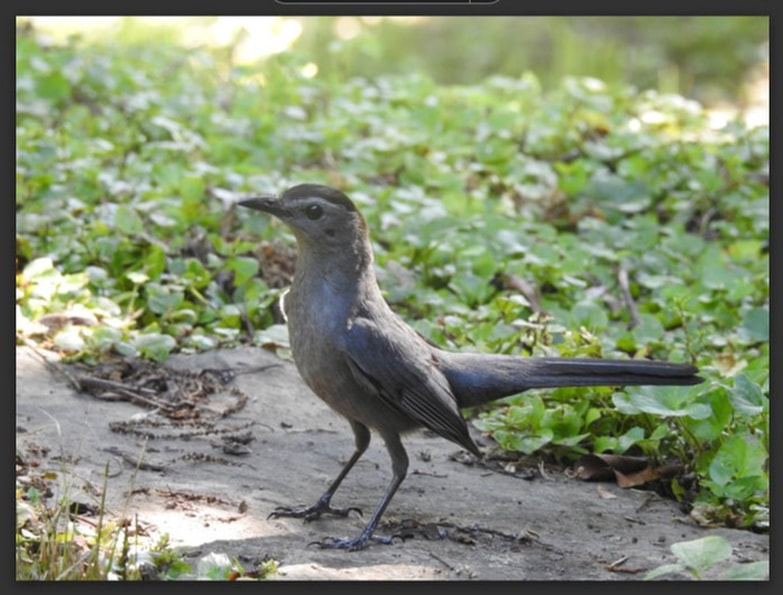 Gray catbird; Credit: Deanne Lawrence Gray catbird; Credit: Deanne Lawrence Sycamore Grove Farm, Madison County The gray catbird (Dumetella carolinenesis) is a migratory bird in our area, returning to Virginia by the last week in April and leaving in large numbers for more tropical climates in the last week of September and early October. While breeding, the catbird protects its young. During nesting season, it is very territorial. It will chase away other songbirds, sometimes even destroying their nests. So it’s no surprise that it doesn’t tolerate the brown-headed cowbird. There are 247 species of birds that end up caring for cowbird’s eggs and nestlings – but not the catbird! Catbirds are among the small number of birds (including blue jays, American robins and brown thrashers) that deftly reject cowbird eggs. If a cowbird introduces an egg into its nest, the catbird quickly breaks the egg and tosses it out. Catbirds inhabit a wide variety of shrubby habitats, including suburban backyards. The male singing in your backyard during mating season is likely to be the one that was there last year. Studies have found that a catbird returns to the previous year's nesting location place throughout its life. While its average life span is 2 ½ years, only about 60% of catbirds survive each year. The longest living catbird recorded was 17 years and 11 months old. The gray catbird’s voice is a reflection of this songster. A relative of the mockingbird, it copies the sounds of other species in its habitat. It is best known for the cat-like mewing calls from which its common name comes. I have heard stories of people who called the local animal control office, concerned about a cat in their backyard. But it turned out to be a catbird (how embarrassing was that!). We have several catbirds on our farm. I am fascinated to watch them sit on fence posts, jerking their long tails back and forth. Primarily ground-feeders, they flip leaves and other debris aside to find insects, including beetles, ants, caterpillars and grasshoppers. Catbirds also eat spiders, millipedes and wild berries. They are known to be “junk food” eaters, as well. Catbirds have been observed eating doughnuts, cheese, boiled potatoes and corn flakes! Their habit of pecking fruit (but not totally eating it) can make them unpopular with gardeners. But it’s worth a few piece of fruit to have this delightful bird be part of the birds around you. Happy birding! Charlene
0 Comments
Your comment will be posted after it is approved.
Leave a Reply. |
Have a blog or blog idea?
Let us know (click) Other Blogs
VA Native Plant Society - click Brenda Clement Jones - click John Muir Laws' Blog - click Megan's Nature Nook - click Categories
All
Archives
September 2023
Blog Administrator:
Kathleen A. VMN since 2018 |